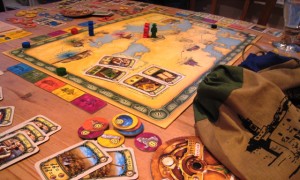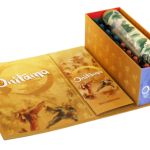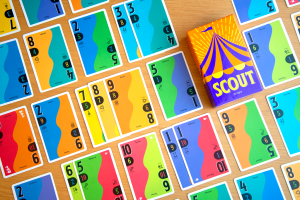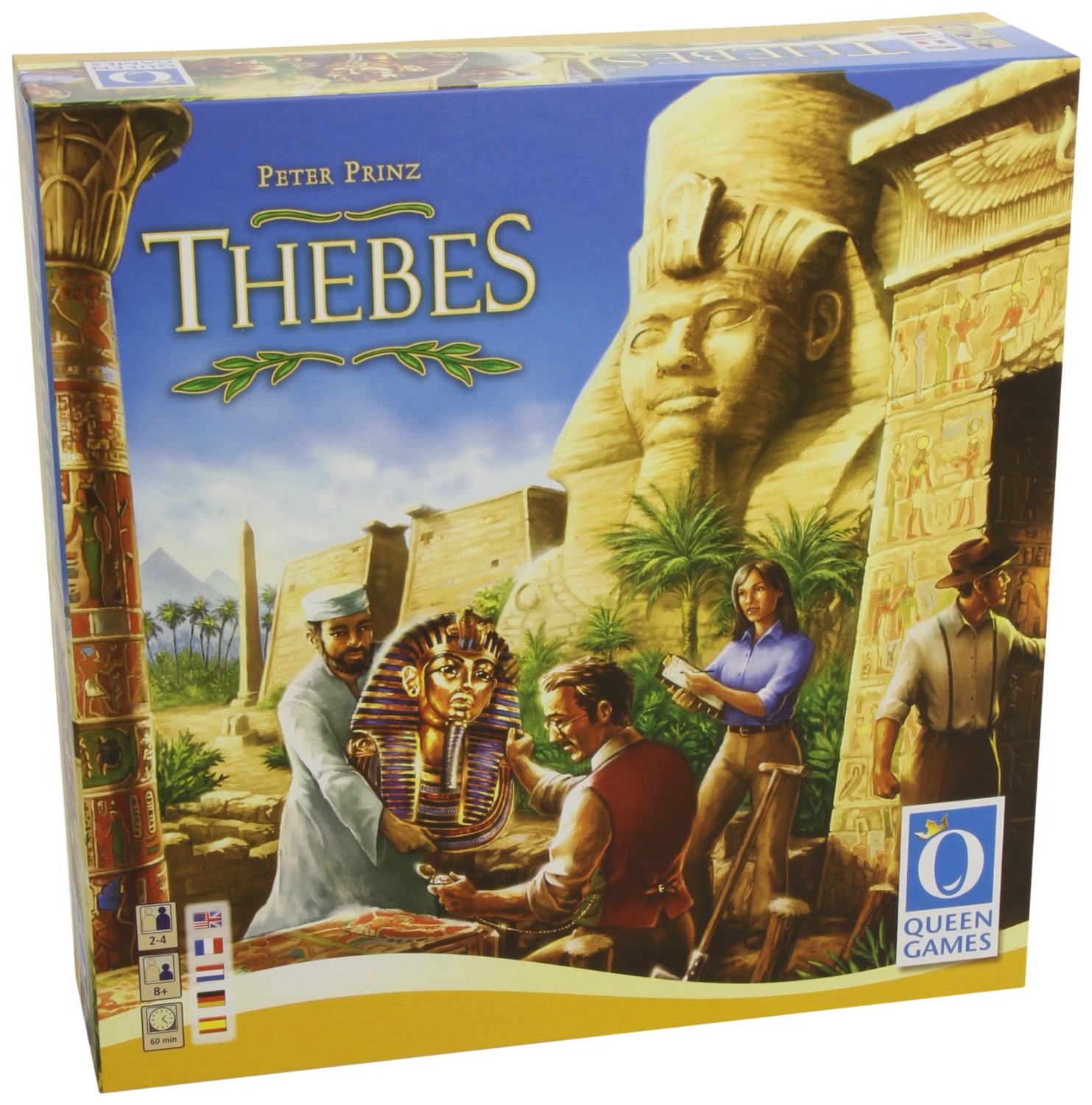
This game was nominated for the Game of the Year back in 2007 and imagined a couple of very unique mechanisms which caught the eye of the gaming world. One of those ideas has been used fairly frequently since in games such as Tokaido and Patchwork.
In this game you are archaeologists travelling around Europe looking to obtain knowledge about 5 historical sites and use it to try and dig for ancient artifacts to put on shows in the classiest joints around town. In this game you have 2-3 years (depending on # of players) to do this. The actions you take cost time, better actions cost more time and the player on turn is the one who is furthest behind on the time track. They will keep taking turns till they overtake someone on the track, who will then take turns and so on (this is the one copied by Tokaido et. al.)
There are 3 main actions that you can take:
- take a card form the pool of 4 cards. They give you knowledge to help you dig (more about that later), the ability to travel quicker as well as a host of other abilities. Each card has a time cost as well as a location which you have to move to to take it, which also costs time. Managing your time is a huge part of the game (and life I’ve been told).
- take part in a dig. This is where you put all that knowledge to good use. Each of the dig 5 locations is represented by a bag. In that bag are a bunch of artifact tiles worth a variety of points, joining them in there are a large quantity of dirt (tiles, not literal dirt, gamers are way too anal to cope with dirt in their games), worth between 0 and 0 points. Each player has a very groovy time/knowledge wheel calculator thingamejig. They input their knowledge and the wheel tells them how much time they can spend to pull tiles from the bag. Lots of knowledge means you can spend less time to pull a lot of tiles and vice versa. When you take the tiles, you keep the artifacts…and the dirt? You throw it back in the bag, so later excavations at the site have a poopier good stuff to bad stuff ratio, bummer man.
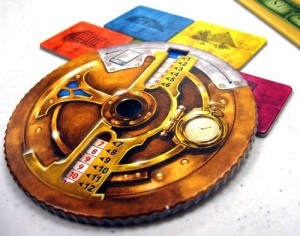
- put on a show. If you have the right combination of pretty things, you can put on shows to impress your peeps for points. Everybody loves old, shiny stuff right?
Keep going till everyone runs out of time. Most points wins. That’s it. It’s really a pretty simple and fun game. So why have most of you never heard of it?
Well, like many things in life, luck and timing are a factor. There are a lot of games in this world and you often need the right set of circumstances to rise to the top, but I think that bag draw, which in many ways is a brilliant mechanism hurt the game. Luck is great in some ways, but in others it can wind you up like a watch. Serious gamers can easily get their knickers in a twist and when they put all that thought into a game only to lose because of some bad bag pulls. And when they get mad they write bad reviews. Yes, that can be infuriating if you go into this game with the attitude its a more serious game than it is. It is a family game though, and should be treated as such. The nice thing about this game is that you can play with your kids (10+) or your non-serious gamer friends and try your best and still lose even though you are in general a better gamer than them. You’ll still win more often than not, but you don’t have to tone it down so you don’t crush them and make them never want to play with you again. Not only that, the components are amazing, that wheel is so cool and in my opinion the bag draws are exciting. Its hilarious when someone draws a big pile of dirt and exciting when you get a haul a great artifacts. So, suck it up and smile when the reverse happens to you, its all part of the fun of the experience. Many games in this world have fairly pasted on themes, but not this one. It goes all out to try and capture that feeling of archaeological exploration (I imagine anyway, having never archaeologically dug before).

Its in our library and available to try, so lets dust it off and give it some love again.

